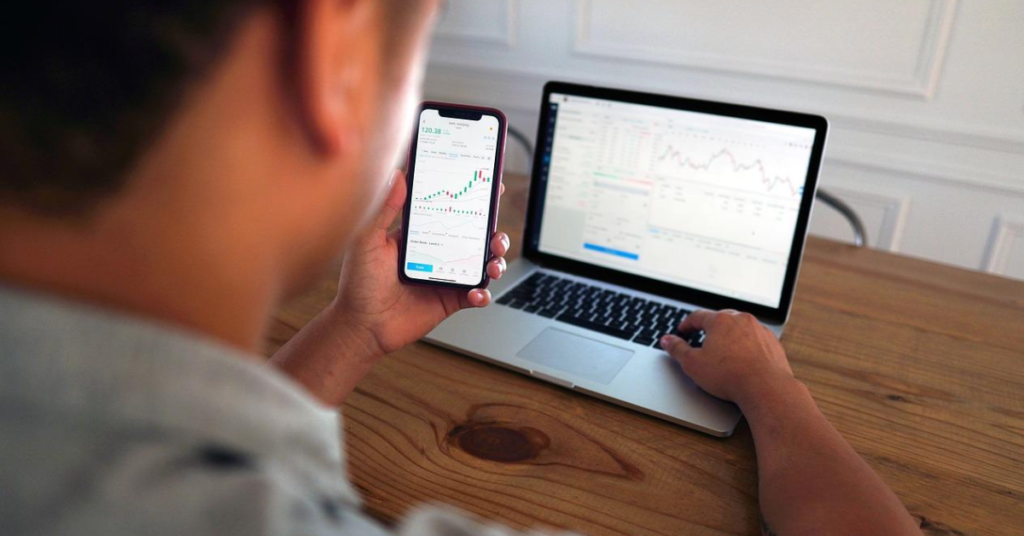Bond yield fluctuation can spell opportunity for investors.

Stocks tend to garner most of the attention when it comes to investment strategies, but bonds can also be a wise alternative for individuals or investment groups. While bonds have a reputation for being safe and predictable, rising bond yields can make or break bond investments, so it is important to understand this concept.
In this blog post, we review the definition of bond yields, the factors that drive them, and some recent historical trends. We also take a closer look at the implications of rising bond yields on governments, institutional investors, and individuals.
Bond yields explained
When you purchase a bond, you are essentially loaning money to the investor, corporation, or government entity issuing the bond, in exchange for an agreed-upon interest payment when the bond matures. This interest payment is added to the face value of the bond when it is cashed out. Unlike other forms of investment, bonds represent an ownership of debt rather than an equity investment in the company or entity issuing the bond.
The bond yield is another way of stating the annual return on a bond investment. For example, if a $5,000 bond pays out $500 after one year, the yield is 10%. When the bond is first issued, the yield matches the coupon rate of the bond and is generally fixed for the life of the bond. When interest rates change, either due to global macroeconomic changes or if the financial condition of the issuer changes, these fluctuations introduce variability to the bond market. Depending on the initial coupon rate, a bond can gain or lose value over time, which directly impacts bond resale prices and demand. This is because investors will be willing to either pay more or less for that same bond given the new interest rate environment.
What is yield to maturity?
The total return expected on a bond if held until it matures is known as the yield to maturity (YTM). Over time, the laws of supply and demand impact bond prices just like other assets. Rising interest rates lead to higher yields, and if yields are higher then there is less demand for existing bonds with a lower yield—therefore their price will fall. There is an inverse relationship to bond price and bond yields. Bond prices are also impacted by the maturity date. Bonds locked in at a higher yield become more valuable when their maturity date is farther out, while the opposite is true for bonds with a lower yield.
Factors influencing bond yields
All investment types carry some level of risk, and bonds are no exception. It is important to understand the factors that can impact bond yields and how they are likely to vary over time. The primary sources of bond yield fluctuation include:
- The economy: In general, a strong economic outlook leads to lower yields, with positive signs like low inflation, high GDP growth, and strong consumer sentiment making it easier for bond issuers to service their debt and reduce the risk of default.
- Government monetary policy: Investors and borrowers pay close attention to the Federal Reserve (Fed) funding interest rate, since this value impacts the overall economy by driving rates for financial institutions. As a counterbalance for other economic factors, the Fed often cuts interest rates during challenging economic times, then raises rates to slow down economic growth or curb inflation.
- Global events: Many of the geopolitical factors that impact the stock market, such as wars, natural disasters, and boycotts, also impact bond yields by causing investor confidence to fluctuate, leading to unpredictable changes in the demand for bonds.

The recent trend in rising bonds
Ongoing Fed rate hikes since the middle of 2022 have coincided with higher bond yields. 10-year treasury bond yields topped out at 4.98% in October of 2023, then began to level off in 2024. This recent activity has been primarily driven by inflation, and the eleven Fed rate hikes aimed at taming it. An unexpected US Treasury bond issuance and a drop in the US credit rating during the second half of 2023 also contributed to the trend.
More recently, yields rose slightly in mid-2024 based on a stronger-than-expected jobs report. Although this would ordinarily be viewed as a positive sign, low unemployment contributes to the inflation that has stalled Fed interest rate cuts, despite lower than normal GDP growth and sagging consumer confidence. This unusual combination of economic conditions also contributed to 10-year yields lower than two- or five-year bonds, in a reversal of the usual pattern.
Historically, good rising bond yields have occured when:
- There were fears of a bond sell-off after the Federal Reserve announced plans to reduce their bond buying program in 2013.
- Increased infrastructure spending causing inflation fears in 2016.
- A previous round of Fed interest rate hikes happened in 2018.
By contrast, bond yields consistently fell below 2% a decade ago, when inflation and interest rates were both low, and the European debt crisis spurred global demand for “safe-haven” assets, including bonds.
Implications of rising bond yields
Rising bond yields can lead individual investors to re-evaluate their investment strategies, including their retirement portfolios. For example, investors with accounts heavily weighted toward the stock market based on historically low bond yields may decide to shift more of their assets to bonds. Individual investors who purchased bonds when yields were lower may experience a negative impact on their personal accounts based on the declining bond market value.
Institutional investors, including pension funds and insurance companies, might experience a similar impact on a larger scale. These investors typically take a risk-based approach to portfolio balancing, and high yield bonds are considered a low-risk investment with a stable income stream. Institutional lenders also pay close attention to bond maturity dates, sometimes shifting to shorter-duration bonds to ensure they are less vulnerable to price decreases.
Rising bond yields and borrowing costs
Rising bond yields also impact other aspects of our financial lives that are less obvious. Mortgage lenders often price their loans based on long-term treasury bond yields, making it harder for individuals and families to buy or refinance homes when bond yields are up. High yields also impact other common forms of personal debt like credit cards, auto loans, and small business loans, eating into disposable income and savings accounts at a time when inflation may already be reducing their buying power.
The Federal government is responsible for controlling interest rates and monetary policies that lead to rising bond yields, but they also experience headwinds from these changes based on:
- Higher cost of servicing public debt
- Difficulty in refinancing debt
- Reduced funding for discretionary spending
- Changes in tax policies to address higher costs
The impact of higher yields on future economic activity varies depending on each individual or investor. While high long-term yields provide a stable income source for some, those holding lower yield bonds or high interest debt may experience temporary setbacks.
In conclusion
Bonds were once perceived as a “set and forget” investment that eventually provided an interest payout for patient bond holders, but times and investment strategies have changed. Looking at bonds through the same dynamic lens as stocks and mutual funds opens new possibilities to optimize bond investments and balance portfolios. We can take a clue from institutional investors who leverage ongoing bond price changes to buy and sell at the opportune time. Understanding the impact of rising bond yields on bond prices, governments policies, and the overall economy helps investors of all types shift bonds into their portfolios strategically.